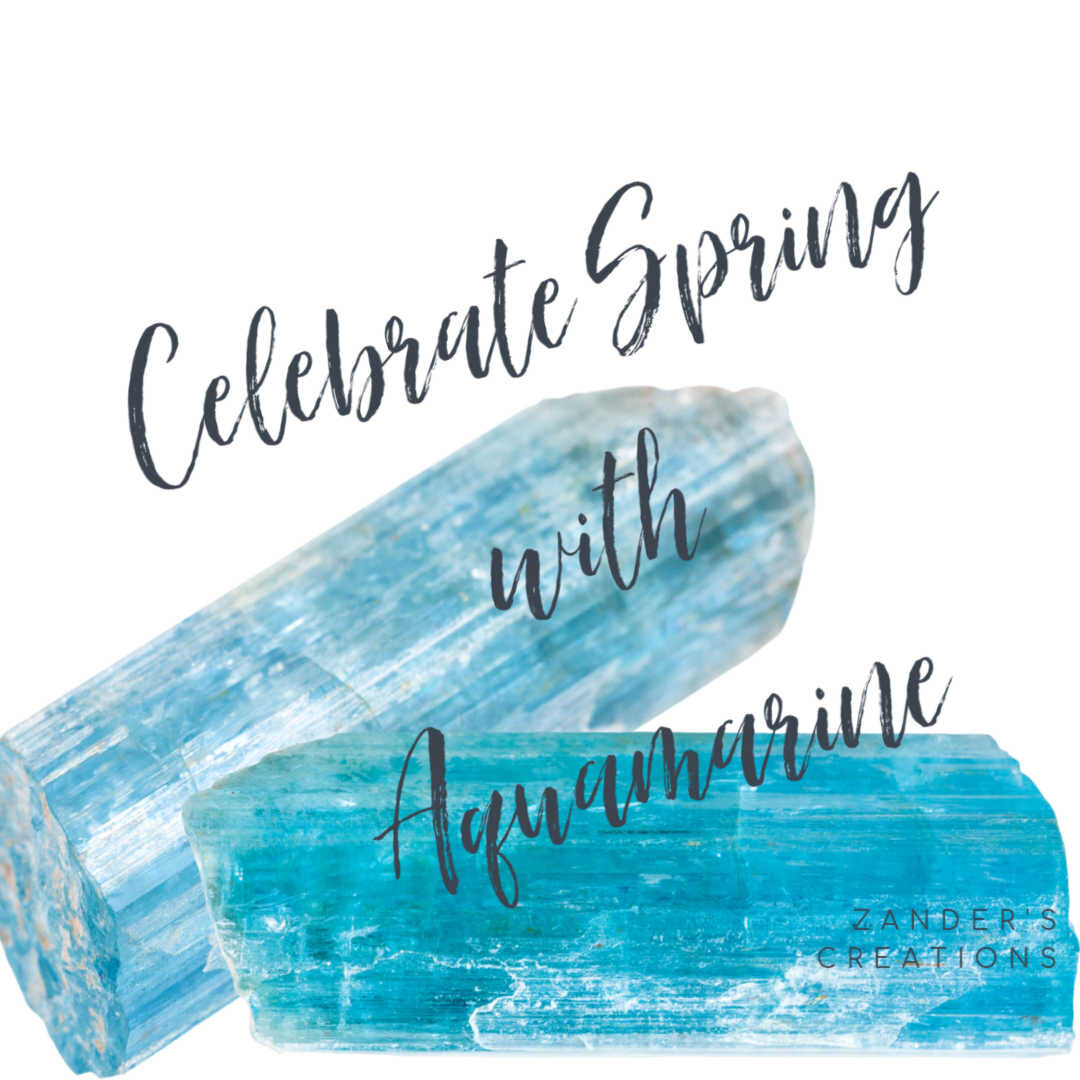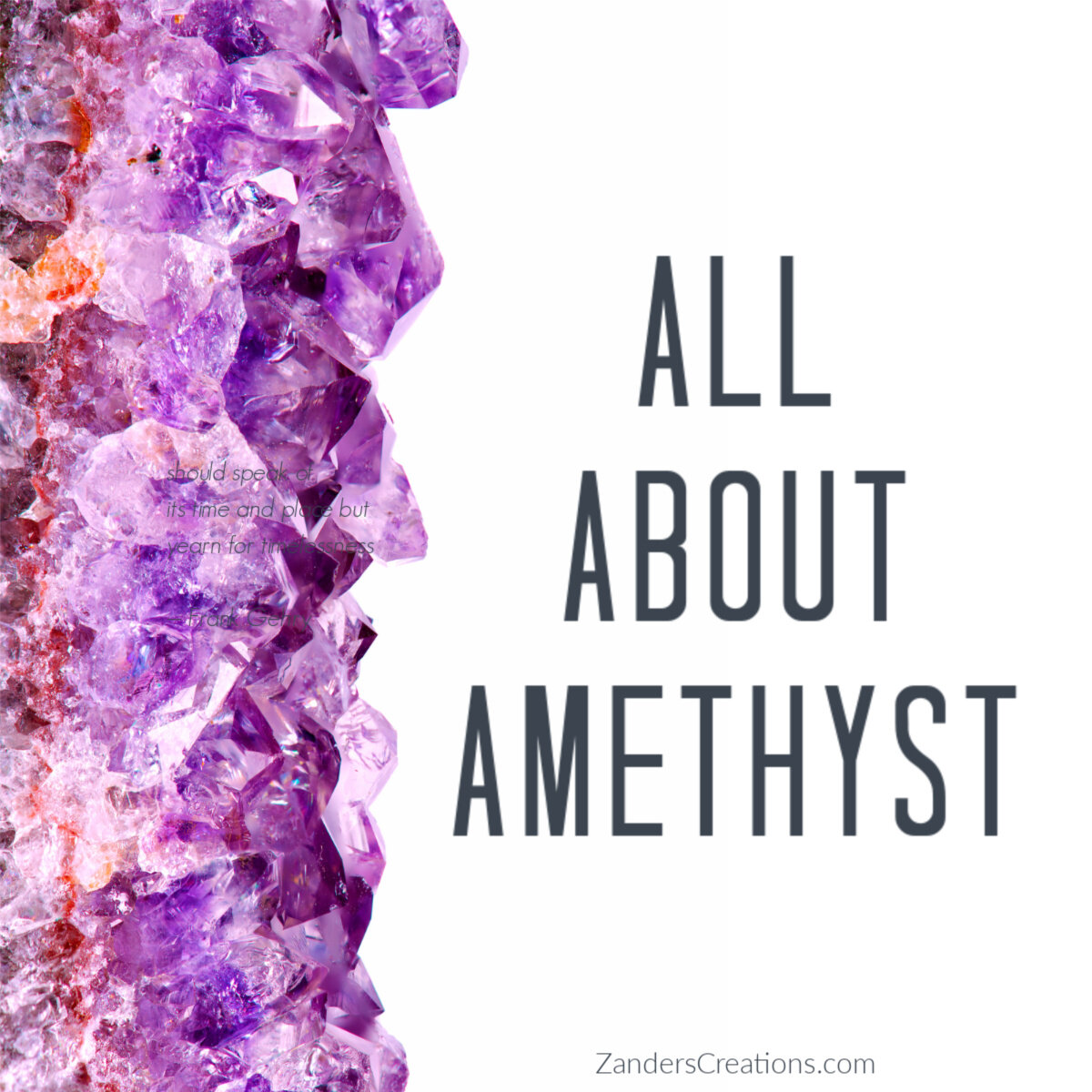By Katherine Cook
As striking as the seawater it gets its name from, the aquamarine has surpassed its duties as the March birthstone and become a popular alternative engagement ring stone. When faceted, aquamarine is remarkably transparent with vitreous brilliance, so it REALLY sparkles.
A favorite among designers for many reasons, the aquamarine is the perfect spring accessory. Its shades range from a pale blue to a strong seafoam blue-green, with deeper shades being a little more valuable. The stone is rather durable and affordable, making it the perfect choice for an everyday piece of jewelry.
Zander’s Creations ring made with aquamarine.
In observance of March’s birthstone, here are 18 facts about aquamarine:
Buying and Care
Aquamarine is a part of the beryl stone family. It is joined by both emerald and morganite. While they come from the same family, aquamarine and emerald stones are greatly different.
Aquamarine gemstones are graded by the four C’s, the same as diamonds- cut, color, clarity, and carat weight.
If you prefer your gem to be without inclusions, you may want to consider choosing a pale, near colorless aquamarine over a diamond. Faceted aquamarine gemstones are typically free of inclusions that are visible to the naked eye.
Unlike most other gemstones, the larger the aquamarine stone is, the more intense its color could be. An aquamarine over five carats will usually have a deeper hue and the smaller gems will appear near colorless. As such, smaller natural aquamarine stones that have a deeper color will sell for more per carat than their bigger deeply colored counterparts. Simply, it is more difficult to find a deeply colored one-carat aquamarine than it is to find a deeply colored five-carat stone- which increases their value.
Rated between a 7.5 and an 8 on the Mohs scale, the aquamarine is soft enough to accommodate a variety of cutting styles but hard enough to be considered for daily wear. While it is a strong stone, your aquamarine jewelry should not be stored near jewelry that ranks higher on the scale (such as diamonds and sapphires) as they have the potential to scratch it.
Different shades of aquamarine have been popular at different points in history. Today, the preferred shade is a pure, light sky blue. As such, some greenish colored stones are heat-treated to change their color to a lighter blue and improve their clarity. These changes are permanent. It is nearly impossible to detect when heat treatment was performed, and it usually adds value to the gem because of the color improvement.
Unless it has an internal flaw, it is safe to clean aquamarine in an ultrasonic machine or steam cleaner. However, warm water, a mild dish soap, and a soft-bristled toothbrush work perfectly fine. You should avoid harsh chemicals.
Aquamarine stones available for use in your design.
History
The name aquamarine comes from the Latin words “aqua marina,” which means “seawater.” It got its name during the Georgian Era in the 18th century.
Protective amulets and decorative jewelry containing aquamarine have been found that date as far back as 500 B.C.
In 1936, the Brazilian government gifted Eleanor Roosevelt with a 1,298-carat faceted aquamarine gemstone. It is now located in the Franklin D. Roosevelt Presidential Library and Museum in Hyde Park, New York.
The largest cut aquamarine in the world is on exhibit in the Natural History Museum at the Smithsonian in Washington, D.C. It is called the Dom Pedro and is an astounding 10,363 carats.
The largest gem-quality raw aquamarine stone was found in 1910 in the village of Minas Gerais, Brazil. It weighed around 243 pounds and was carved into over 100,000 carats of gemstones.
Aquamarine has been mined all over the world, including Colorado and California in the US. Kenya, Madagascar, Pakistan, and Russia are known to produce quality aquamarine gems; however, it is mainly sourced from Brazil.
Aquamarine stones available for use in your design.
Symbolism and Healing Properties
Not only is it the birthstone for March, but aquamarine is also the traditional stone for the 19th wedding anniversary. Fitting, as it was once thought to bring happiness to a marriage.
A long time ago, sailors believed aquamarine to be a treasure from mermaids and wore them in amulets to keep them safe at sea.
Because it is naturally free of any visible inclusions, the aquamarine is often used as a symbol of purity.
Throughout history, aquamarine has been prized as a protector of mental health and well-being. Like the ocean brings a sense of calm, the aquamarine is a calming stone used by crystal healers to soothe nerves. It was used in the Middle Ages to lower anxiety.
Today, aquamarine symbolizes courage, faithfulness, and friendship.
With its ability to dazzle, it comes as no surprise that the aquamarine has been a favorite among gems for over 2,000 years. If you have a loved one with a birthday in March, why not surprise them with a gift that has lasting value, such as an aquamarine ring or pendant. There is nothing quite like a timeless piece of jewelry that shows someone how much you care.
Zander’s Creations is owned and operated by Wayne Cook of Mesa, Arizona. With 20 years of experience in fine jewelry design, he looks forward to helping you create the gift of your loved one’s dreams. Pre-designed jewelry pieces can be purchased online at ZandersCreations.com as well as on Etsy, or you can contact Wayne and he can help you with a custom design.
Custom designed ring with aquamarine by Zander’s Creations.



